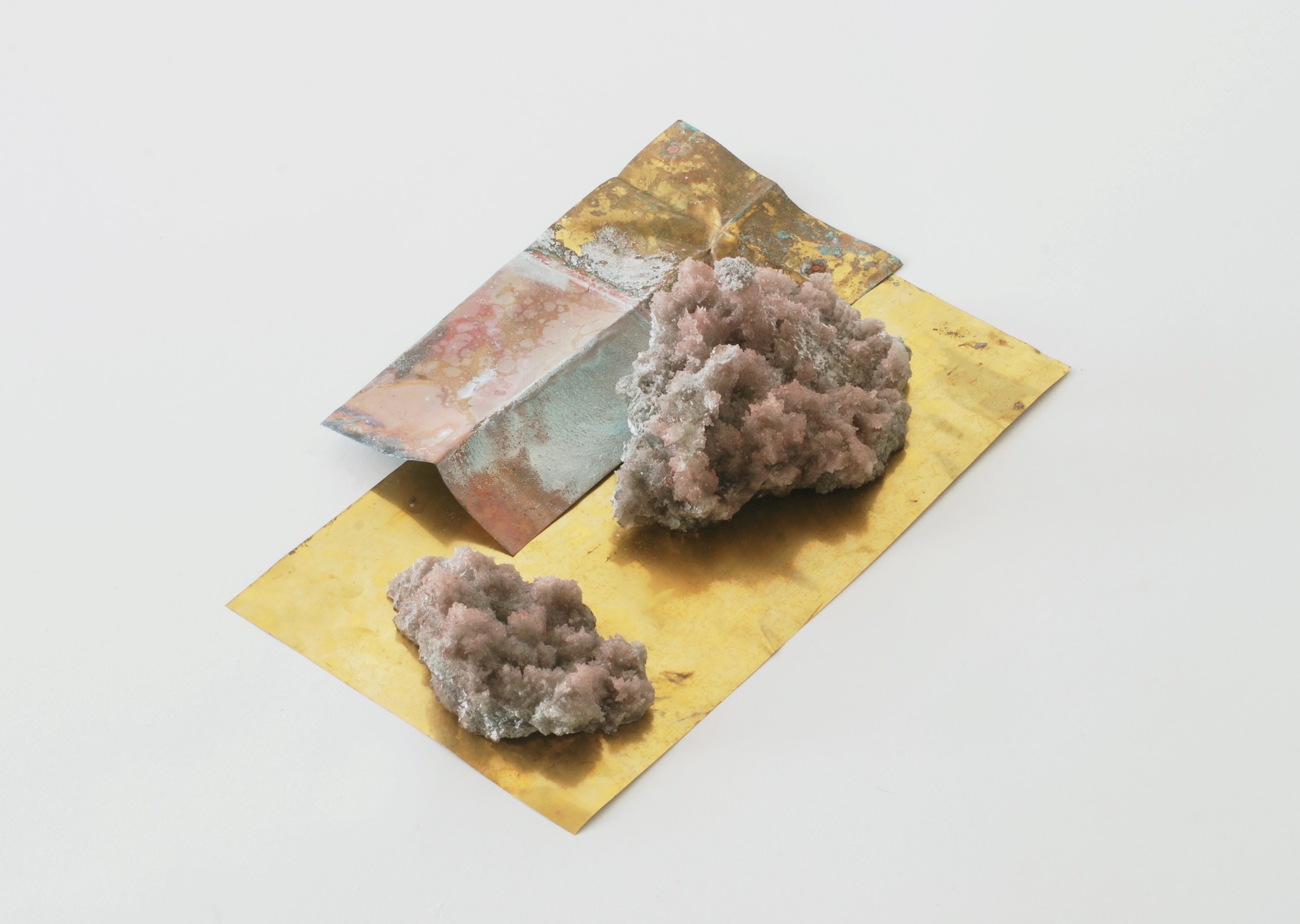Hannah Leighton-Boyce: Consequences of progress, remnants for the future
Sara Jaspan
Consequences of progress, remnants for the future (2019). Six Giclée prints on Hahnemüle Photorag, edition of three
What divides an artwork presented in a gallery from everything produced around it, within the privacy of a studio? Physical off-cuts, abandoned attempts, discarded ideas, experiments, preparatory models, sketches and drawings. Surely the line that’s often drawn between these and ‘a finished piece’ is significant (based on a set of decisions), and yet also an artificial dissection of creative output. One that imposes a hierarchy of value and denies the degree to which any ‘final’ work remains part of an artist’s evolving process and trajectory.
PAPER’s presentation at Venice Biennale this year – featuring work by Iain Andrews, Tim Ellis, David Hancock, Matthew Houlding, Hannah Leighton-Boyce, and Jill Randall – is framed around the notion of an artist’s studio as ‘a sacred space, a mythical space in which magic happens’. Magic that can only occur within the protection of its walls, granting the freedom to play, without external judgement or critique.
Leighton-Boyce’s contribution to the pavilion, a series of six photographic prints titled Consequences of progress, remnants for the future (2019), is in many ways a piece about the ‘not finished piece’. Each image shows what could either be described as a sculptural assemblage or simply a collection of off-cuts and test pieces. The shapes and materials that can be seen are left over from the welding, moulding, sculpting and glazing experiments with salt, clay, brass and steel that the artist undertook whilst developing two large-scale installations for her duo exhibition with artist Ruth Barker presented at Castlefield Gallery in early 2018 and then Glasgow Women’s Library between February and March this year, in association with the University of Salford Art Collection. In this way, the objects are the small consequences of progress that led to an exhibited body of work.
The exhibition was organised as part of the nationwide suite of commissions marking the centenary of the Representation of the People’s Act in 1918 (a landmark in the movement for electoral reform that gave the vote to some women over 30, achieved through tireless campaigning). Leighton-Boyce’s decision to work primarily with salt was inspired by the extended research residency that she undertook at the Glasgow Women’s Library; drawing upon the material’s inherent properties of healing and energy, strength and vulnerability, and bodily-ties to physical and emotional labour (sweat and tears), as a metaphor for the stories of solidarity, support and resilience that she encountered within the library’s archives and very spirit of the place itself.
While the more industrial-scale installations included in the Castlefield/Glasgow show are rich in their own set of meanings, Leighton-Boyce also became interested in the unanticipated results and sculptural quality of the material generated in the process of developing their handmade prototypes, and began arranging the assemblages and photographing them as a form of documentation (or ‘note-taking’, as she also describes it). Across the series of prints currently on display in Venice, the beautifully-delicate pinkish curls are fragments of dried clay leftover from the makeshift prop she created to hold the mould for another piece she was working on in place. The paper-thin sheet of brass beside the two rocks of crystallised saline capture the remarkable colours that occurred when the materials reacted together. The fleshy colour of the pillars is an unanticipated effect of the salt mixing with the clay in which it was moulded, baked and sometimes infused. Beneath the pillars, two perfectly white salt tablets sit atop the broken base of the mould in which they were formed and split.
I had the pleasure of visiting Leighton-Boyce in her space at Rogue Artists’ Studios in Manchester (momentarily rupturing its privacy); of handling the pleasingly-tactile, palm-sized objects in the photographs; and of seeing the cauldron-like crucible from which many of them emerged, its walls made iridescent over the course of the numerous chemical reactions that had taken place inside. Though the objects look perfectly formed and refined within the tasteful giclée prints; disassembled and experienced ‘in person’, their rawness –as simple off-cuts and unpolished ideas – was striking. Leighton-Boyce explained how the process of documenting each temporary assemblage offered a way of ‘fixing’ them within the permanent frame of the photograph, and then allowing them to live on as separate, unresolved objects within the world. Objects that might form the basis of new works (‘remnants for the future’). She’s already considering how they could be scaled-up to create larger, ‘resolved’ pieces that explore the materiality of salt and its relationship to body further.
The artist’s crucible in her studio
Perhaps the fundamental appeal of this approach is the way in which nothing is overlooked. How value can be appreciated across material/object/art object and how each can become the other; recognising what is to be gained by relaxing the division between a finished piece and the play that precedes it. In Consequences of progress, remnants for the future, Leighton-Boyce breaks the mythology and secrecy surrounding the artist’s studio and welcomes us in. A gesture of generosity that is full of reward.
Consequences of progress, remnants for the future (2019) is held within the University of Salford Art Collection and can be viewed by appointment. In addition to her inclusion in the PAPER Pavilion at Venice Biennale 2019 (presented at Palazzo Mora until 24 November 2019), a new body of work by Leighton-Boyce is also on display at Bury Art Museum and Sculpture Centre as part of the group show ‘Each Toward the Other’ (until 9 November 2019).




